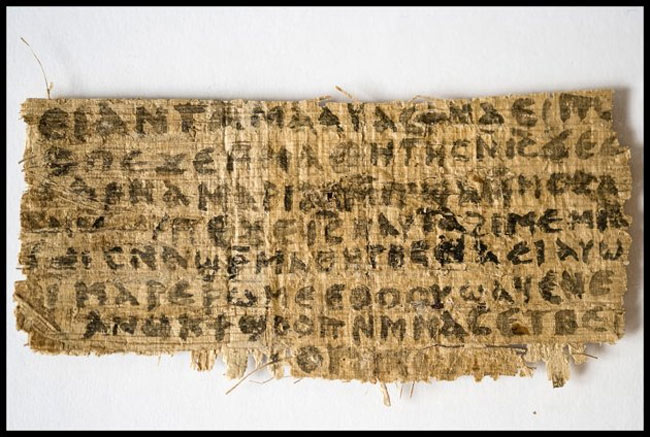5 Unanswered Questions About Jesus

As Christians worldwide gather for Easter to celebrate their belief in the death and rebirth of Jesus, researchers continue to delve into the mysteries that surround the man.
While most historians agree that Jesus did in fact exist, the circumstances surrounding his life and death — and the supernatural occurrences linked to them — make it difficult to separate fact from legend.
The following are five questions about Jesus that, for now, at least, remain unanswered. [Religious Mysteries: 8 Alleged Relics of Jesus]
1. When was Jesus born?
Though most Christians celebrate the birth of Jesus on Dec. 25, there's near-universal agreement that this wasn't his actual birthday. Even the year of his birth — usually given as sometime between 2 B.C. and 7 B.C. — is up for grabs.
In 2008, astronomer Dave Reneke argued that the Star of Bethlehem (a celestial event long associated with Jesus' birth) may have been Venus and Jupiter coming together to form a bright light in the sky. Using computer models, Reneke determined this rare event occurred on June 17 in the year 2 B.C.
Other researchers have claimed that a similar conjunction between Saturn and Jupiter occurred in October of 7 B.C. Still others have claimed that Jesus was born in the spring, based on stories about shepherds watching over their flocks in fields on the night of Jesus' birth — something they would have done in the spring, not the winter.
Sign up for the Live Science daily newsletter now
Get the world’s most fascinating discoveries delivered straight to your inbox.
2. Was Jesus married?
Few questions arouse more controversy than speculation about Jesus' marital status, a subject famously broached in Dan Brown's novel "The Da Vinci Code" (Doubleday, 2003). Some biblical scholars have argued that Jesus may have been married to Mary Magdalene, a woman frequently mentioned in the New Testament of the Bible.
"In the 'Gospel of Philip' (found in the Gnostic codices at Nag Hammadi), these words are clearly readable, in spite of the holes in the manuscript: 'There were three who always walked with the Lord: Mary his mother, and her sister, and Magdalene, the one who was called his companion,'" wrote Barbara Thiering on Beliefnet.com.
A recently discovered scrap of papyrus has lent some credibility to those who claim Jesus was married. Known as the "Gospel of Jesus' Wife," the document was unveiled in 2012 and contains lines such as, "Jesus said to them, 'My wife...'" Forensic analyses have suggested that the document is probably authentic and not a recent forgery, though the jury is still out on that.
3. Did Jesus walk on water?
One of the most impressive miracles ascribed to Jesus claims he walked on the water of the Sea of Galilee (a freshwater lake in modern-day Israel). Recent research has found that might be true, though the water was frozen at the time.
During an unusual cold snap, when temperatures dropped to 25 degrees Fahrenheit (minus 4 degrees Celsius), a floating patch of ice could have developed above the salty springs found along the lake's western shore. Floating ice in the unfrozen waters of the lake would have been hard to spot, researchers claim, especially if rain had smoothed its surface.
4. When did Jesus die?
Several sources mention Jesus' crucifixion at the hands of Pontius Pilate, the Roman prefect in Judaea. Christian Gospels say the skies darkened for hours after the crucifixion, which historians viewed either as a miracle or an omen of dark times to come.
Using astronomy, later historians have used this mention to pinpoint the death of Christ. Some tie the crucifixion to a total solar eclipse of almost two minutes that occurred in 29 C.E., whereas others say a second total eclipse, blocking the sun for more than four minutes in 33 C.E., marked Jesus' death.
5. Was Jesus buried in the Shroud of Turin?
The authenticity of the Shroud of Turin — reputedly the burial shroud of Jesus — has been in question for centuries, and scientific investigations over the last few decades have only muddled the ongoing debate over its authenticity.
The Catholic Church doesn't have an official position on the cloth, despite the fact that the relic is visited by thousands of worshippers each year at the Turin Cathedral in Italy. Radiocarbon dating tests conducted at three different labs in the 1980s indicated the cloth was less than 800 years old, and was probably produced in the Middle Ages sometime between A.D. 1260 and 1390.
But a 2014 study claims neutron emissions from an ancient earthquake that rocked Jerusalem could have created the iconic image in the shroud, as well as altered the radiocarbon levels that later suggested the shroud was a medieval forgery.
Other experts dispute those findings, so the authenticity of the Shroud of Turin — like so many other questions surrounding the life and death of Jesus — remains a mystery.
Follow Marc Lallanilla on Twitter and Google+. Follow us @livescience, Facebook & Google+. Original article on Live Science.










